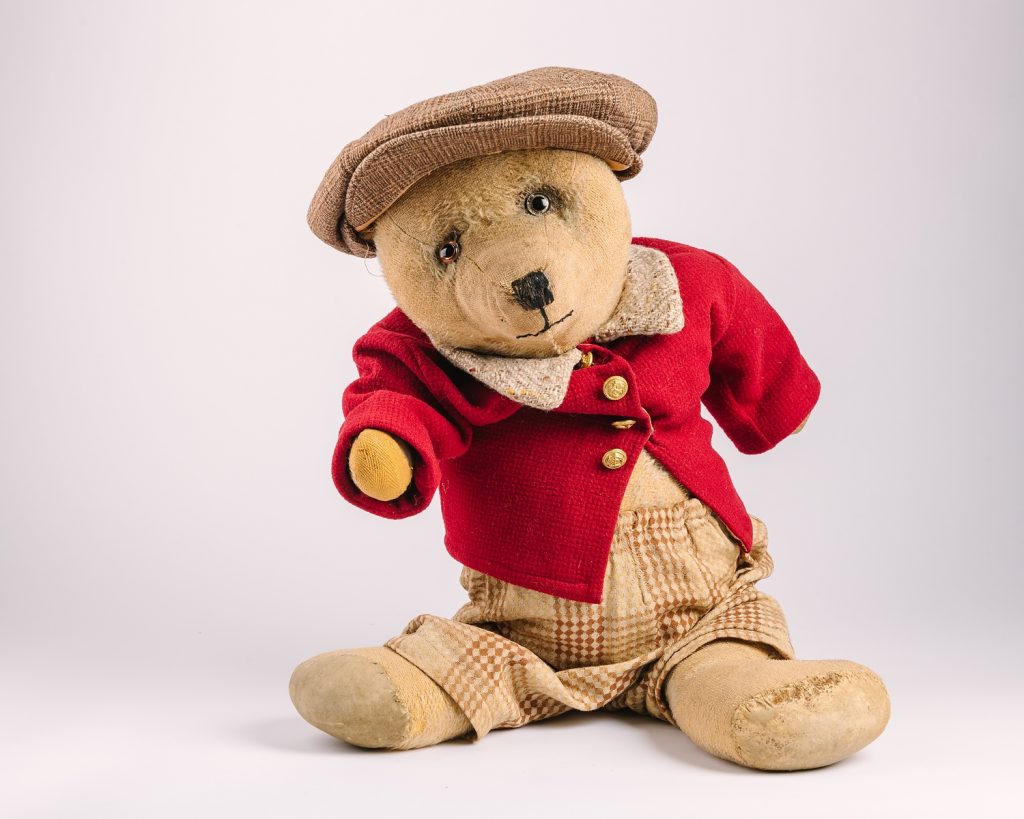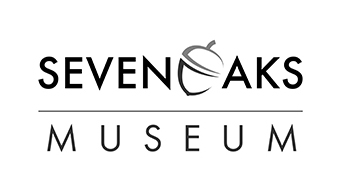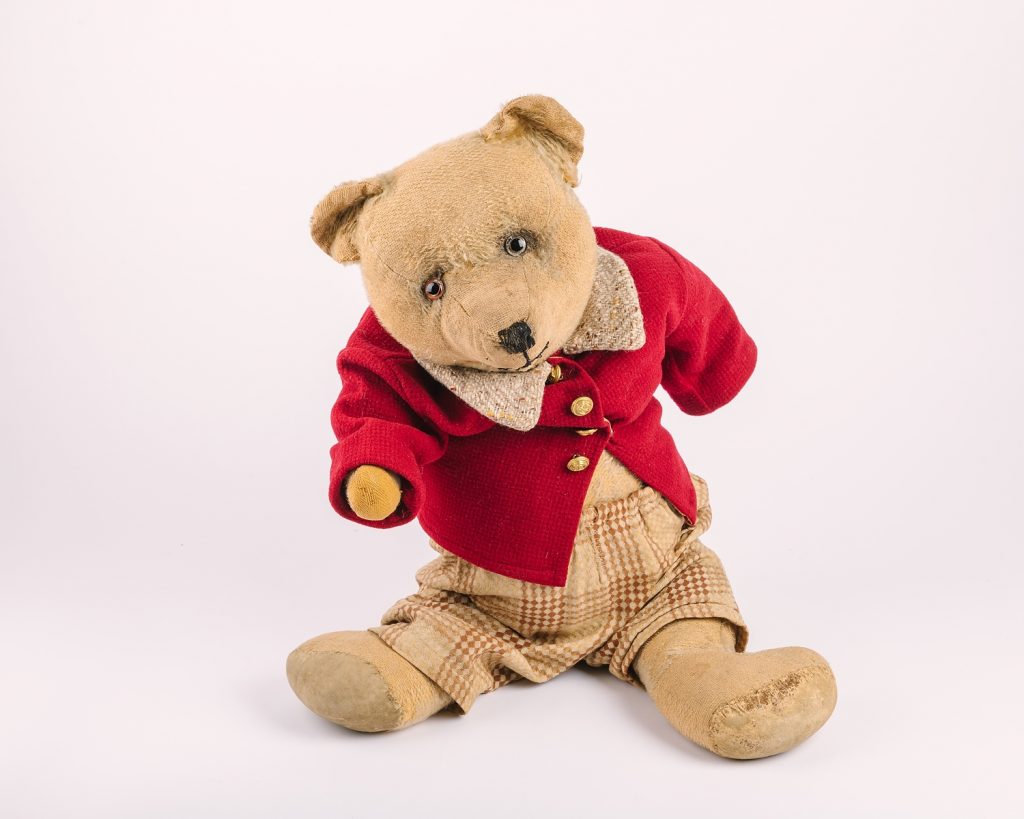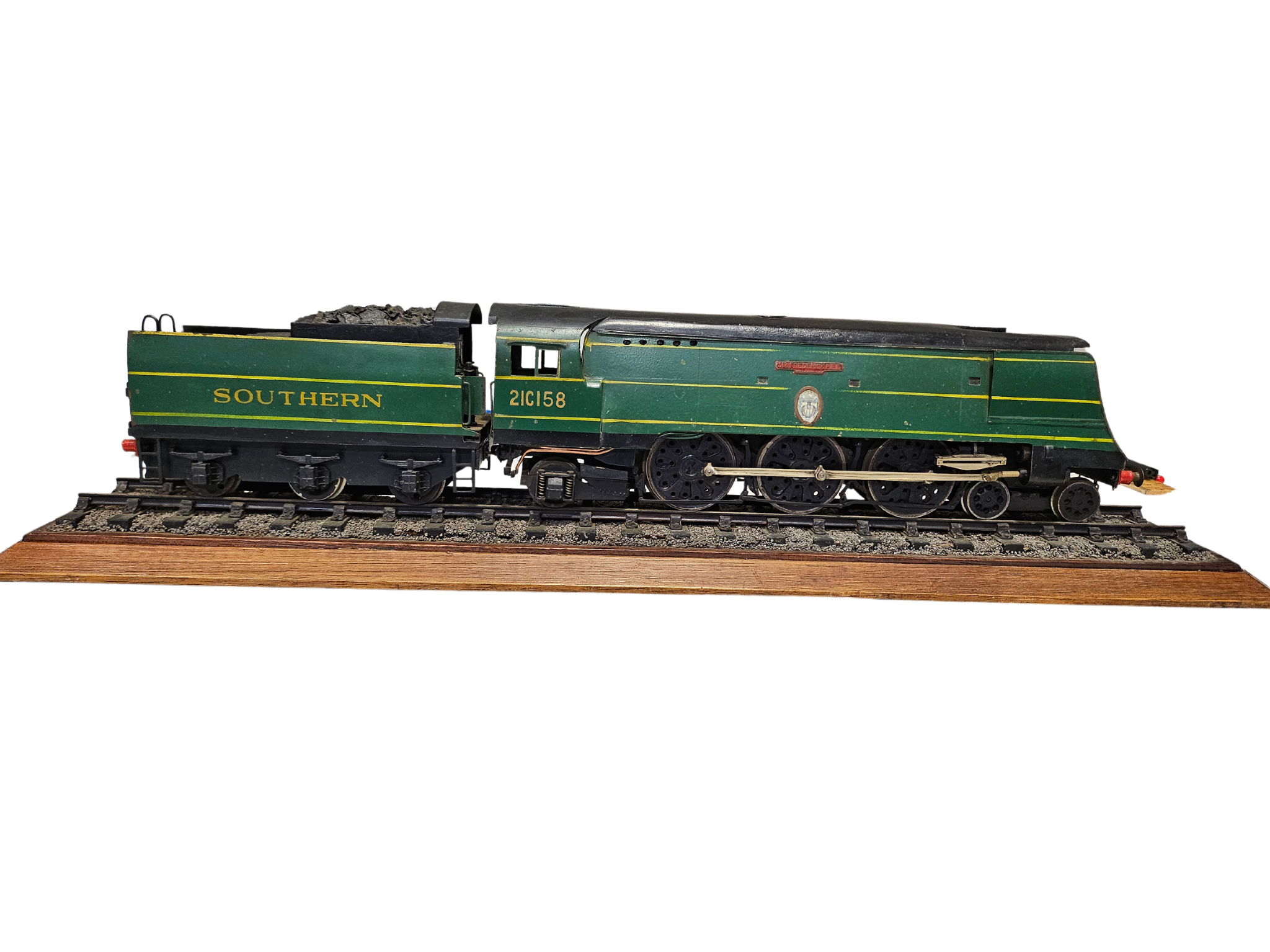‘Donald Double’
This teddy bear was recently gifted to the museum. It is the only teddy bear in the Sevenoaks collection.
Donald Double, so the handwritten label in his flat cap calls him, was given to his owner Margaret Terry Double as a young child. She was born in 1925, when her parents lived in Bradbourne Park Road, Sevenoaks. From this, we can guess that he is around the same age. We can also guess his age from the way he has been made.
Donald’s clothes are thought to have been made for him by Margaret’s mother or grandmother. His yellow check trousers and bright red jacket bring to mind Rupert the Bear, the children’s book character created in 1920.

Margaret’s father had served in the First World War and suffered from chronic illness after that. He died when she was 8 years old. Her mother also passed away from ill health at a young age.
Orphaned at just 10 years old, Margaret went to live with her aunt and uncle in Eltham, bringing Donald bear with her. A child’s favourite teddy is always special to them, but in Margaret’s case this was even more so, as Donald was a precious link to her old home and family unit which she missed greatly.
During the Second World War, Margaret started boarding school at Kent College Pembury, taking Donald with her. Even through adulthood, Donald remained Margaret’s companion and moved around the country with her and her own family.
Margaret spent her final years back in her hometown of Sevenoaks, at Emily Jackson House care home.
We can see Donald was well-loved, from the wear and repairs done to him over the years, but his character remains. He was always carried around by his nose, which explains why the fur is missing in that area. His right eye has been replaced with a different colour to the original. He has a voice box inside his stuffing, but he no longer growls.
Our job as a museum is not to restore an object to its original condition, but to preserve it from where its story ended, and Margaret’s family felt that Donald’s story should end with Margaret’s.
Written by Liz Botterill, Curator



